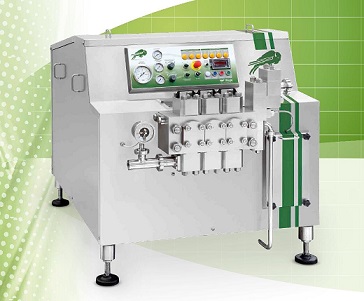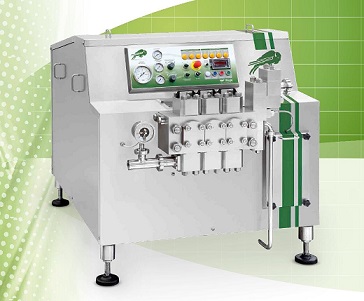H.P.Homogenizers Homolab 
Laboratory Homogenizers
Homolab is a laboratory homogenizer suitable to test almost 20 l/h of product, reaching an homogenizer pressure of 1.500 Bar.
The FBF ITALIA laboratory homogenizer is equipped with two pumping pistons.  This characteristic allows the homogenizing heads to treat the product sample to be tests carried out with single piston machines. This particular feature allows to transfer to industrial production the homogenizing result obtained in laboratory research.
This characteristic allows the homogenizing heads to treat the product sample to be tests carried out with single piston machines. This particular feature allows to transfer to industrial production the homogenizing result obtained in laboratory research.
Applications
DAIRY, FOOD AND ICE CREAM INDUSTRIES
Stability, uniformity, long life, digestibility, best appearance, clour and flavour improving. These are just some of the main advantages you can obtain by using tha homogenizer for treating common foodstuff. The results, in economic and qualitative terms, make the use of the new FBF ITALIA technology particularly convenient.
This is a list of just some of the applications in which homogenization may be utilized:
Additives - Almond milk - Animal fats - Arabic gum - Baby food - Butter oil - Caseinates - Condensed milk - Cooking cream - Cream - Cream cheese - Dessert - Egg based liquor - Eggs - Emulsion - Flavours - Fruit and Tomatoe Concentrate - Fruit juices - fruit pulps - Gelatines - Honey - Ice cream mix - Ketchup - Milk - Milk cream based liquors - Milk for yoghurt - Milk protein - Puddings - Recombined milk - Rice milk - Sauce - Soya Milk - Tomatoe juices - Vegetable fats - Vegetable Oil - Yoghurt

COSMETIC, CHEMICAL, PHARMACEUTICAL, AND PETROCHEMICAL INDUSTRIES
When used in the cosmetic industry, homogenization provides more stable, uniform emulsions with higher performance characteristics. In the pharmaceutical industry, the primarily mechanical nature of the homogenization process provides direct access to enzymes, proteins, liposomes and intracellular active substances without having to utilize chemical lysis of the membrane. Other effects are seen in the preparation of stable solutions of products with different physical characteristics (proteins, creams, solutions of active principles, oils, vitamins). The increase in the surface area of the micronized particles is also of interest to the chemical and petrochemical industries because of the resulting enhancement of transformation reactions. This also creates further advantages, such as: noticeable reduction of catalysing substances, intensification of pigment colour, enhanced use and reduced quantity of additives, viscosity control of finished products. Crushing of active principle particles generates an increase in surface area, thus enhancing preparation assimilation.
Here is a list of some products from the cosmetic, chemical, pharmaceutical and petrochemical
industries that may be homogenized:
Adhesives - Starches - Antibiotics - Cellulose and derivatives - Waxes - Colorants - Cosmetics - Beauty creams - Toothpaste - Detergents - Emulsifying disinfectants - Emulsions - Greases - Inks - Latex - Liposome suspensions - Lotions - Shoe polish - Emulsifiable oils - Lubricating oils - Pigments - Perfumes - Proteins - Resins - Soaps - Syrups - Paints - Vitamins







 Print
Print Consultation:010-66155031/32/33
Consultation:010-66155031/32/33 Email:office@goodwill-tech.com
Email:office@goodwill-tech.com